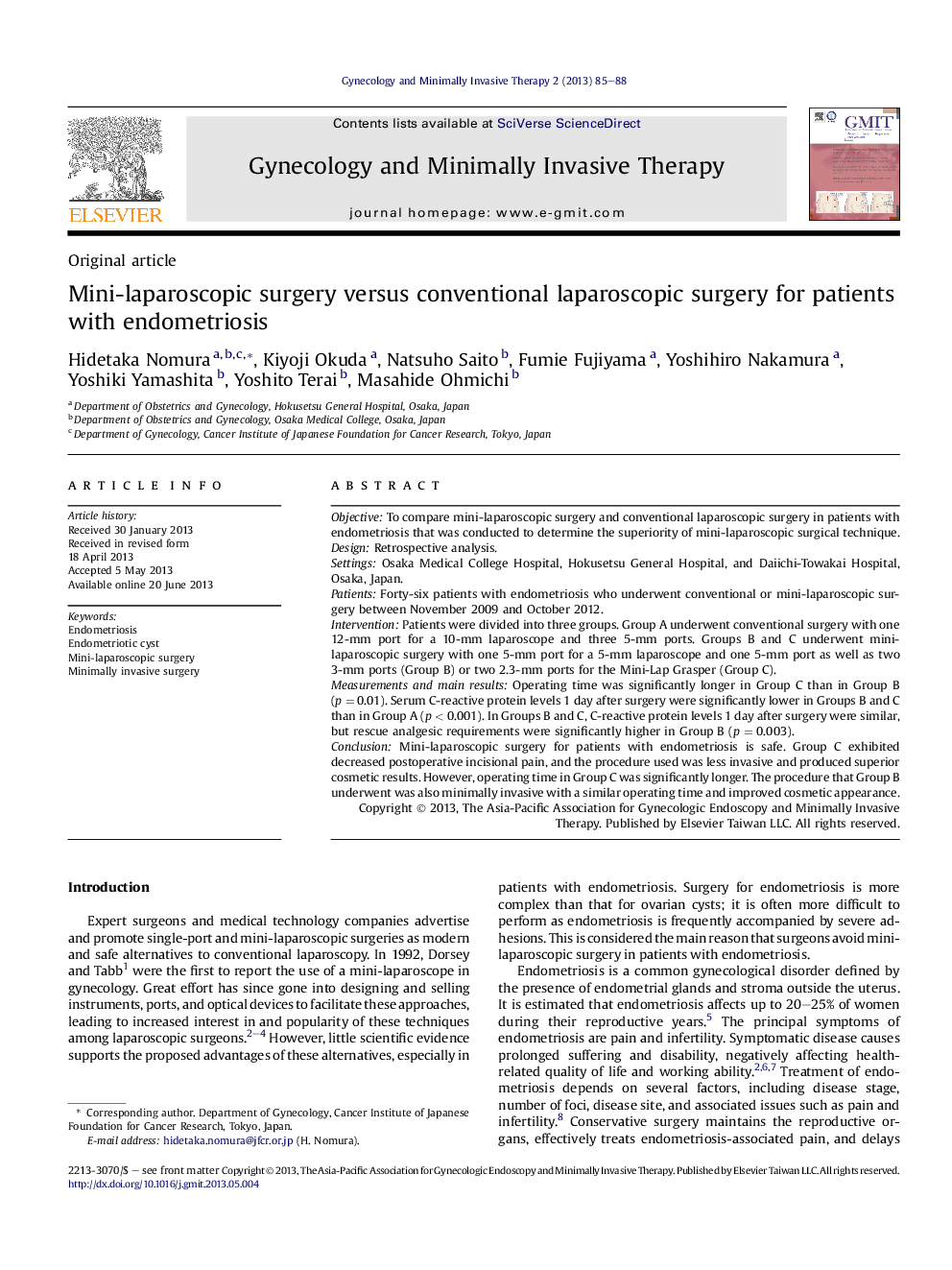| Article ID | Journal | Published Year | Pages | File Type |
|---|---|---|---|---|
| 3953867 | Gynecology and Minimally Invasive Therapy | 2013 | 4 Pages |
ObjectiveTo compare mini-laparoscopic surgery and conventional laparoscopic surgery in patients with endometriosis that was conducted to determine the superiority of mini-laparoscopic surgical technique.DesignRetrospective analysis.SettingsOsaka Medical College Hospital, Hokusetsu General Hospital, and Daiichi-Towakai Hospital, Osaka, Japan.PatientsForty-six patients with endometriosis who underwent conventional or mini-laparoscopic surgery between November 2009 and October 2012.InterventionPatients were divided into three groups. Group A underwent conventional surgery with one 12-mm port for a 10-mm laparoscope and three 5-mm ports. Groups B and C underwent mini-laparoscopic surgery with one 5-mm port for a 5-mm laparoscope and one 5-mm port as well as two 3-mm ports (Group B) or two 2.3-mm ports for the Mini-Lap Grasper (Group C).Measurements and main resultsOperating time was significantly longer in Group C than in Group B (p = 0.01). Serum C-reactive protein levels 1 day after surgery were significantly lower in Groups B and C than in Group A (p < 0.001). In Groups B and C, C-reactive protein levels 1 day after surgery were similar, but rescue analgesic requirements were significantly higher in Group B (p = 0.003).ConclusionMini-laparoscopic surgery for patients with endometriosis is safe. Group C exhibited decreased postoperative incisional pain, and the procedure used was less invasive and produced superior cosmetic results. However, operating time in Group C was significantly longer. The procedure that Group B underwent was also minimally invasive with a similar operating time and improved cosmetic appearance.
